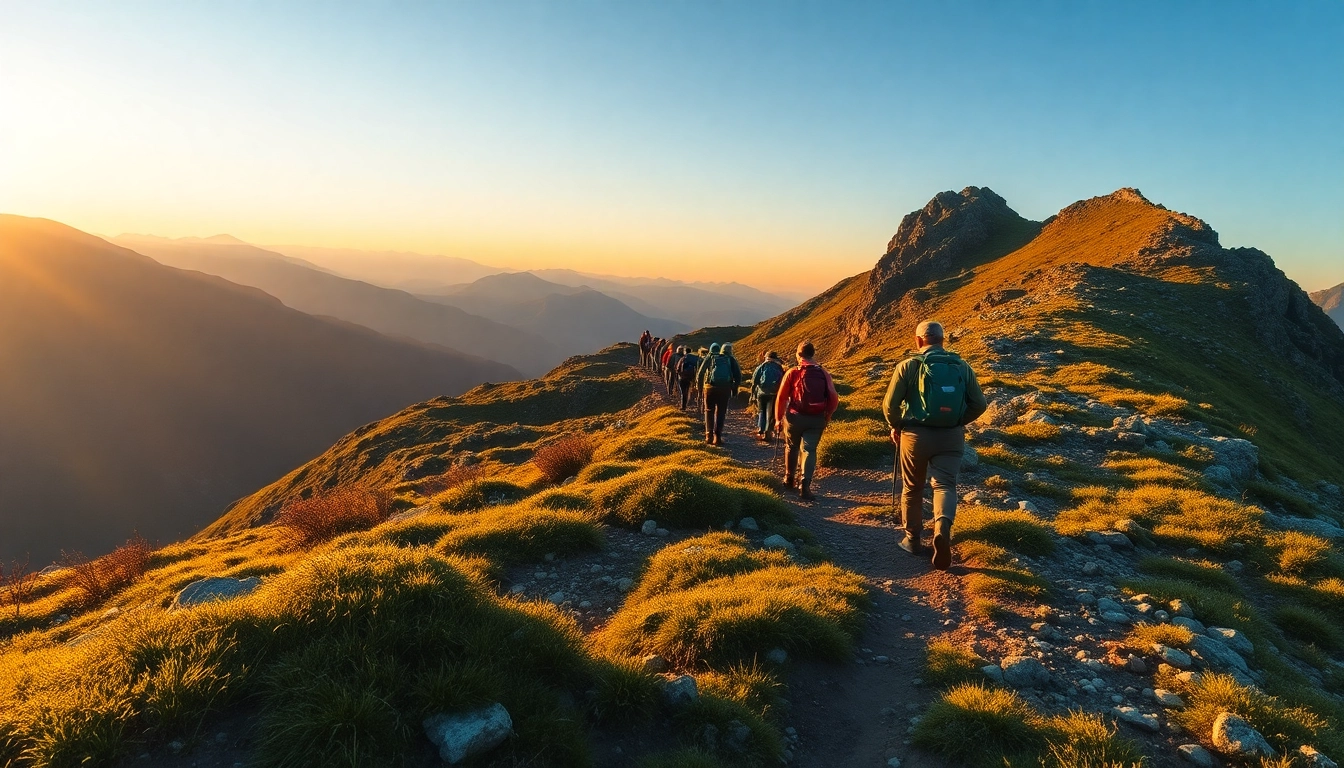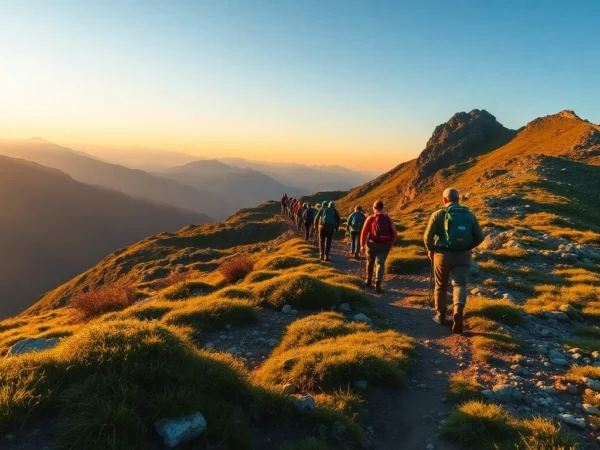Mastering Trekking: A Complete Guide to Conquering Trails in Indonesia
Introduction to Trekking in Indonesia
Indonesia, renowned for its breathtaking natural landscapes, volcanic peaks, lush rainforests, and vibrant biodiversity, offers some of the world’s most captivating trekking adventures. Whether you’re a seasoned trekker or a novice explorer, the Indonesian archipelago provides a diverse range of trails that promise unforgettable experiences amid pristine wilderness. As you embark on these journeys, you’ll not only challenge your physical endurance but also immerse yourself in the rich cultural tapestry woven by local communities. To truly appreciate this activity, it’s essential to understand what trekking entails and how it differs from other outdoor pursuits like hiking, ensuring you’re well-prepared for every adventure.
For more information on planning your trekking adventures in Indonesia, visit trekking in Lombok and discover extensive guides, trail maps, and travel tips tailored for explorers seeking authentic and safe experiences in this incredible country.
What Defines Trekking and Its Unique Appeal
Trekking is fundamentally characterized by long, vigorous hikes typically spanning multiple days, often traversing remote, rugged, and less-developed terrains away from urban centers. Unlike casual day hikes, trekking challenges individuals to navigate through diverse environments such as mountains, dense forests, and valleys, frequently off established trails. This activity demands not only physical stamina but also mental resilience, as trekkers often face unpredictable conditions, varying weather, and logistical challenges.
One of the key aspects that set trekking apart from hiking is the duration and the complexity of the journey. While hiking might involve a few hours or a single day and often follows well-marked trails, trekking entails multi-day expeditions requiring careful planning, overnight accommodations, and resource management. The thrill of conquering a remote mountain peak, crossing alpine passes, or venturing into untouched wilderness fosters a deep sense of achievement and personal growth.
In Indonesia, this appeal is heightened by the country’s extraordinary natural diversity. Trekkers can explore volcanic landscapes like Mount Rinjani, trek through jungle-clad islands, and visit culturally significant sites located in secluded areas. These adventures offer more than physical challenge—they provide immersive experiences that connect individuals with nature and local cultures in profound ways.
Historical Background of Trekking Activities in Indonesia
The roots of trekking in Indonesia are intertwined with the nation’s rich history of exploration and adventure. Indigenous communities have long traveled across islands and mountains for cultural ceremonies, trade, and sustenance. During the colonial era, explorers and mountaineers documented Indonesia’s challenging terrains, laying the groundwork for modern adventure tourism.
The rise of adventure tourism in Indonesia gained momentum in the late 20th and early 21st centuries, driven by increased global interest in sustainable travel and ecotourism. Iconic landmarks such as Mount Rinjani, the second-highest volcano in Indonesia, became internationally recognized trekking destinations. The establishment of national parks and protected areas further promoted trekking as a means to explore Indonesia’s pristine environments responsibly.
Over the years, local communities transitioned from traditional subsistence activities to active participants in the tourism sector, providing guiding services, homestays, and cultural experiences. This evolution fostered a sustainable development model that benefits both ecological conservation and economic growth, making trekking an integral part of Indonesia’s tourism narrative.
Why Trekking is Popular Among Adventure Enthusiasts
The popularity of trekking among adventure lovers stems from its multifaceted appeal. Firstly, it offers a tangible sense of achievement—climbing challenging peaks, crossing remote terrains, and reaching unseen vistas serve as powerful personal milestones. Moreover, trekking provides an authentic way to connect with nature, away from the noise and pollution of urban life, allowing explorers to immerse themselves in Indonesia’s untouched landscapes.
Additionally, trekking opens opportunities for cultural exchange. Many routes pass through villages and indigenous communities, enabling trekkers to experience local traditions, crafts, and cuisines firsthand. This fosters a deeper appreciation and respect for diverse cultures while promoting community-based tourism.
Indonesia’s unique combination of active volcanoes, tropical forests, and pristine beaches ensures that every trekking experience is different, challenging, and enriching. The thrill of discovering hidden waterfalls, hot springs, or summiting a volcano at sunrise makes trekking highly appealing to those seeking adrenaline, serenity, and a profound sense of exploration.
Essential Preparation for Trekking Trips
Choosing the Right Equipment and Gear
Proper equipment is critical for a successful and safe trekking experience. Essentials include sturdy hiking boots with ankle support, moisture-wicking clothing, and weather-appropriate outerwear. A reliable backpack with a capacity suited to the trip’s duration, along with a hydration system, ensures comfort and sustainability on the trail.
Additional gear such as trekking poles enhance stability on rugged terrain, while lightweight sleeping bags and tents are necessary for overnight treks. Navigation tools like GPS devices, maps, and compasses, alongside first aid kits, are vital for emergencies. In Indonesia’s diverse climate, packing sun protection, insect repellent, and medicines for altitude sickness or diarrhea is also recommended.
For detailed gear lists customized for Indonesia’s terrains, consult local trekking experts and adventure gear specialists who understand the unique challenges of the region.
Physical and Mental Preparation Tips
Trekking demands significant physical fitness—cardiovascular endurance, muscular strength, and flexibility each play crucial roles. Preparing through aerobic activities like running, cycling, or swimming, combined with strength training and hiking practice, enhances stamina and resilience.
Mental readiness is equally important. Trekkers should cultivate patience, adaptability, and a positive mindset to handle unforeseen circumstances such as weather changes or trail detours. Visualization techniques, setting realistic goals, and practicing mindfulness can improve focus and reduce anxiety.
It’s advisable to simulate multi-day trips and gradually increase trekking distances to condition your body and mind effectively before embarking on challenging routes.
Planning Your Route and Safety Measures
Effective planning involves selecting routes suited to your skill level, understanding the terrain, and assessing environmental conditions. Utilizing local guides who are familiar with the trails enhances safety and enriches the experience with cultural insights.
Safety measures include informing someone about your itinerary, carrying sufficient supplies and communication devices, and being aware of potential hazards such as wildlife, slippery paths, or altitude sickness.
Monitoring weather forecasts and adhering to Leave No Trace principles further ensures both your safety and the preservation of the environment.
Top Trekking Destinations in Indonesia
Mount Rinjani: Indonesia’s Majestic Volcano Trek
Located on Lombok Island, Mount Rinjani stands at 3,726 meters above sea level and is Indonesia’s second-highest volcano. Its caldera lake, Segara Anak, and surrounding hot springs create a surreal landscape that attracts thousands of trekkers each year. The ascent generally takes 2-3 days, with the trail offering diverse terrains—from lush rainforests to volcanic craters—and stunning panoramic views.
Navigating the Rinjani trek requires moderate to advanced fitness levels, especially to cope with altitude changes and rugged paths. Guided expeditions are recommended to ensure safety and enhance the experience through local insights.
Wildlife Sanctuary Trekking in Borneo
Borneo, shared by Indonesia, Malaysia, and Brunei, hosts some of the world’s richest biodiversity hotspots such as the Gunung Mulu National Park and Kutai National Park. Trekking through these protected areas offers encounters with diverse wildlife—orangutans, pygmy elephants, hornbills—and lush rainforests that date back millions of years.
These journeys typically involve crossing canopy walkways, exploring caves, and navigating riverine systems, demanding good physical conditioning and environmental awareness.
Hidden Trails in Lombok and Around the Gili Islands
Beyond Mount Rinjani, Lombok features numerous lesser-known trails that explore waterfalls, traditional villages, and coastal viewpoints. The less crowded paths provide a more intimate experience with nature and local culture. Trekking in these areas allows travelers to enjoy serene landscapes while supporting sustainable tourism initiatives.
The Gili Islands, though more famous for diving, also offer eco-trekking opportunities to explore mangrove forests and pristine beaches, perfect for those seeking lighter outdoor activities combined with island relaxation.
Tips for Successful Trekking Experiences
Maintaining Physical Endurance
Consistent training leading up to your trip significantly improves endurance. Engage in aerobic exercises, hike regularly on varied terrains, and gradually increase hike durations. Hydration, nutrition, and adequate rest are crucial during the trek itself—consume balanced meals, drink plenty of water, and listen to your body’s signals.
Respecting Nature and Local Cultures
Responsible trekking involves minimal environmental impact. Follow designated trails, refrain from picking plants or disturbing wildlife, and dispose of waste properly. Respect local customs and traditions, seek permission before photographing communities or sacred sites, and support local artisans and businesses.
Leave No Trace: Responsible Trekking Practices
Adopting Leave No Trace principles ensures the preservation of Indonesia’s natural beauty for future generations. Pack out all trash, avoid introducing foreign elements to ecosystems, and stay on established paths to prevent habitat degradation. Educate fellow trekkers on sustainable practices and share best habits to promote eco-friendly tourism.
The Benefits and Challenges of Trekking
Health and Fitness Advantages
Regular trekking improves cardiovascular health, enhances muscular strength, and boosts endurance. The physical activity helps in weight management, increases lung capacity, and promotes overall well-being. Mentally, it reduces stress, enhances mood, and fosters resilience.
Overcoming Common Trekking Challenges
Some typical hurdles include fatigue, altitude sickness, adverse weather, and navigation issues. To overcome these, proper preparation, acclimatization, and choosing suitable gear are vital. Being adaptable and maintaining a positive outlook help manage unforeseen circumstances effectively.
Achieving Personal Growth and Connection with Nature
Trekking is more than physical exertion; it cultivates patience, perseverance, and a sense of humility. Facing challenges in remote environments fosters self-awareness and confidence. Connecting intimately with nature rejuvenates the mind and spirit, often resulting in transformative experiences that inspire continued exploration and environmental stewardship.


